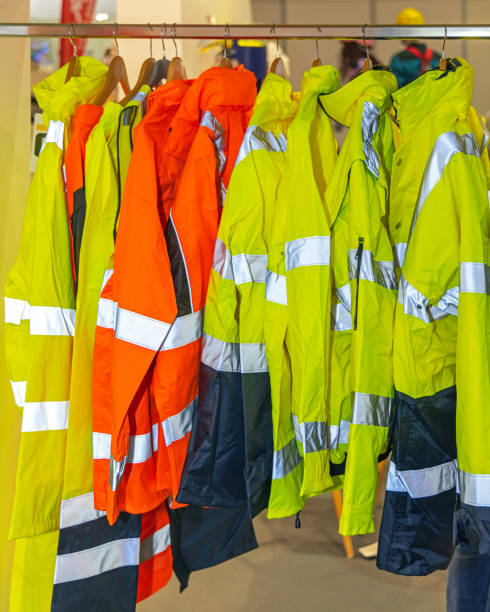In an ever-evolving world where safety and performance are paramount, the development of innovative protective fabrics has become a cornerstone of various industries. From firefighting to military applications, these advanced materials are revolutionizing the way we approach personal protective equipment (PPE) and high-performance gear. This article delves into the fascinating realm of cutting-edge protective fabrics, exploring their properties, applications, and the impact they’re making across different sectors.
The Evolution of Protective Fabrics
Protective fabrics have come a long way since the days of heavy, cumbersome materials that prioritized safety at the expense of comfort and mobility. Today’s innovative fabrics represent a perfect fusion of durability, comfort, and uncompromising protection. This evolution has been driven by advancements in material science, nanotechnology, and a deeper understanding of the specific needs of end-users in various high-risk environments.
From Basic to Advanced: The Journey of Protective Materials
The journey of protective fabrics began with natural materials like leather and wool, which offered basic protection against the elements. As industrial and military needs grew more complex, so did the demands placed on protective gear. This led to the development of synthetic materials that could withstand extreme conditions while providing enhanced protection against specific threats.
Key Players in the Protective Fabric Arena
When discussing innovative protective fabrics, it’s impossible to overlook the contributions of certain groundbreaking materials. Among these, Kevlar and aramid fibers stand out as game-changers in the industry.
Kevlar: The Superhero of Synthetic Fibers
Kevlar, a high-strength para-aramid synthetic fiber developed by DuPont, has become synonymous with advanced protection. Known for its exceptional strength-to-weight ratio, Kevlar is five times stronger than steel on an equal weight basis. This remarkable material finds applications in a wide range of protective gear, from bulletproof vests to cut-resistant gloves.
The versatility of Kevlar extends beyond personal protection. It’s used in aerospace applications, marine cordage, and even in consumer products like high-performance sporting goods. The material’s ability to resist cuts, abrasions, and high temperatures while remaining lightweight has made it an invaluable asset in numerous industries.
Aramid Fibers: The Backbone of Modern Protective Fabrics
Aramid fibers, including Kevlar, Nomex, and Twaron, form the backbone of many modern protective fabrics. These synthetic fibers are characterized by their high strength, heat resistance, and chemical stability. Aramid-based fabrics are widely used in flame-resistant clothing, ballistic protection, and high-temperature filtration applications.
The unique properties of aramid fibers allow them to maintain their strength and resilience even under extreme conditions. This makes them ideal for use in firefighting gear, military uniforms, and industrial protective equipment where exposure to heat, flames, or chemicals is a constant risk.
Innovations in Flame-Resistant Fabrics
One of the most critical areas of development in protective fabrics is flame resistance. Industries such as oil and gas, electrical work, and firefighting require gear that can withstand extreme heat and prevent burn injuries.
Advanced Flame-Resistant Technologies
Modern flame-resistant fabrics go beyond simply not catching fire. They are designed to self-extinguish, prevent heat transfer, and maintain their structural integrity even after exposure to flames. Some innovative approaches include:
- Inherently flame-resistant fibers that have fire protection built into their molecular structure
- Treated fabrics with advanced chemical finishes that activate upon exposure to heat
- Multi-layer fabrics that combine different materials to provide comprehensive protection against heat, flames, and other hazards
These advancements have significantly improved the safety and comfort of workers in high-risk environments, allowing them to focus on their tasks without compromising on protection.
High-Performance Fabrics for Extreme Conditions
Beyond flame resistance, protective fabrics are being engineered to withstand a variety of extreme conditions. From arctic expeditions to space exploration, these materials are pushing the boundaries of what’s possible in harsh environments.
Adapting to Environmental Challenges
High-performance fabrics are now being designed with specific environmental challenges in mind. For instance, materials used in arctic gear not only provide insulation but also manage moisture to prevent hypothermia. Similarly, fabrics used in space suits must protect against radiation, micrometeorites, and dramatic temperature fluctuations.
The development of these specialized fabrics often involves combining multiple technologies. For example, a single piece of protective clothing might incorporate:
- Moisture-wicking layers to keep the wearer dry
- Thermal regulation technology to maintain optimal body temperature
- Cut-resistant fibers for protection against sharp objects
- Anti-microbial treatments to prevent odor and bacterial growth during extended wear
The Future of Protective Fabrics
As we look to the future, the field of protective fabrics continues to evolve at a rapid pace. Emerging technologies and innovative approaches are set to redefine what we consider possible in terms of protection, comfort, and performance.
Smart Fabrics and Wearable Technology
The integration of electronics and sensors into protective fabrics is opening up new possibilities for real-time monitoring and enhanced safety. Smart fabrics can detect environmental hazards, monitor vital signs, and even communicate with external systems to provide timely alerts and information.
Sustainable Protection
With growing awareness of environmental issues, there’s an increasing focus on developing sustainable protective fabrics. This includes exploring bio-based materials, improving recyclability, and reducing the environmental impact of manufacturing processes without compromising on protective qualities.
Conclusion
The world of innovative protective fabrics is a testament to human ingenuity and the relentless pursuit of safety and performance. From the strength of Kevlar to the versatility of aramid fibers, these materials are not just products but lifesaving technologies. As we continue to push the boundaries of what’s possible, the future of protective fabrics looks brighter than ever, promising even greater levels of safety, comfort, and functionality across a wide range of applications.
Whether it’s protecting firefighters, enhancing military capabilities, or enabling exploration of extreme environments, innovative protective fabrics will continue to play a crucial role in safeguarding lives and enabling human achievement in the most challenging conditions.

